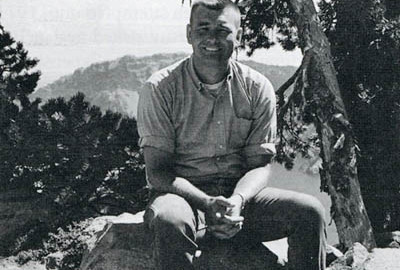Did that position involve a transition for you, away from salamanders?
Yes, it did require me to do a lot of background work. I spent a lot of time in the library collecting papers and doing literature searches. I used to have a huge pile of stuff on benthic organisms in lakes. Dave Anderson, who urged me to join them on Devil’s Lake, gave me a 200 page paper by C.H. Mortimer. He published on the sediment processes of lakes in 1940 – 41. It really stimulated my interest in limnology. I worked there for a couple of years and had to take a lot of coursework.
During this two-year period of 1965 to 1967, I was taking coursework and preparing for exams in two languages. They required German and French for a Ph.D. at that time. They also required me to take calculus. During this time my initial advisor, John Owen, decided that he wanted to focus on other kinds of research. As one of his graduate students, I was shifted to a new fellow, Joe K. Neal. He was a famous biologist and limnologist from back east, maybe from the University of Kentucky. He was nearing the end of his career and wanted a place to write a book. The University of North Dakota offered him a full professorship and he supervised two graduate students, Dave Anderson and me. Dave and I were working on our dissertation topics on Devils Lake. I began to have weekly meetings with Joe K. Neal during the fall of 1966 and in time it turned out that Joe and I didn’t get along. I can’t really pinpoint what the problem was, but we just didn’t get along and I could see it was going to be difficult. He just didn’t seem interested in my research and I couldn’t really get help from him. I couldn’t even get him to go in the field with me to show him what I was doing. I then secretly made plans to leave North Dakota and started to send queries to different universities. These were out west because my sister lives in Tacoma. One of my letters went to Oregon State and I got a phone call one night from Jack Donaldson. He was just starting there, been in Corvallis for about a year. This was about March of 1967, and he had a grant to study the lakes of Oregon in order to classify them. Jack was looking for people to bring on board and wanted two or three people to do this work. It was another research assistantship where I wouldn’t have to teach, and carried a stipend plus the tuition waiver. The doctorate was a three-year program, so I talked it over with my wife. It was a nice opportunity and I had heard that Oregon State and Oregon were both renowned universities. Unfortunately this has changed, but at that time they were both highly respected at least where I was living. A lot of people wanted to go there, thinking these were top universities and at the time they were.
They had money.
That and they also had prestige. They were relatively small but desirable. We moved out here in July 1967. I proceeded to work with Jack Donaldson on classifying the lakes of Oregon. Initially, I really didn’t know what to do. I felt that his subject was rather broad since there are 6000 lakes in the state and 2000 of those are named. I didn’t know how he was going to do all that in three years.


